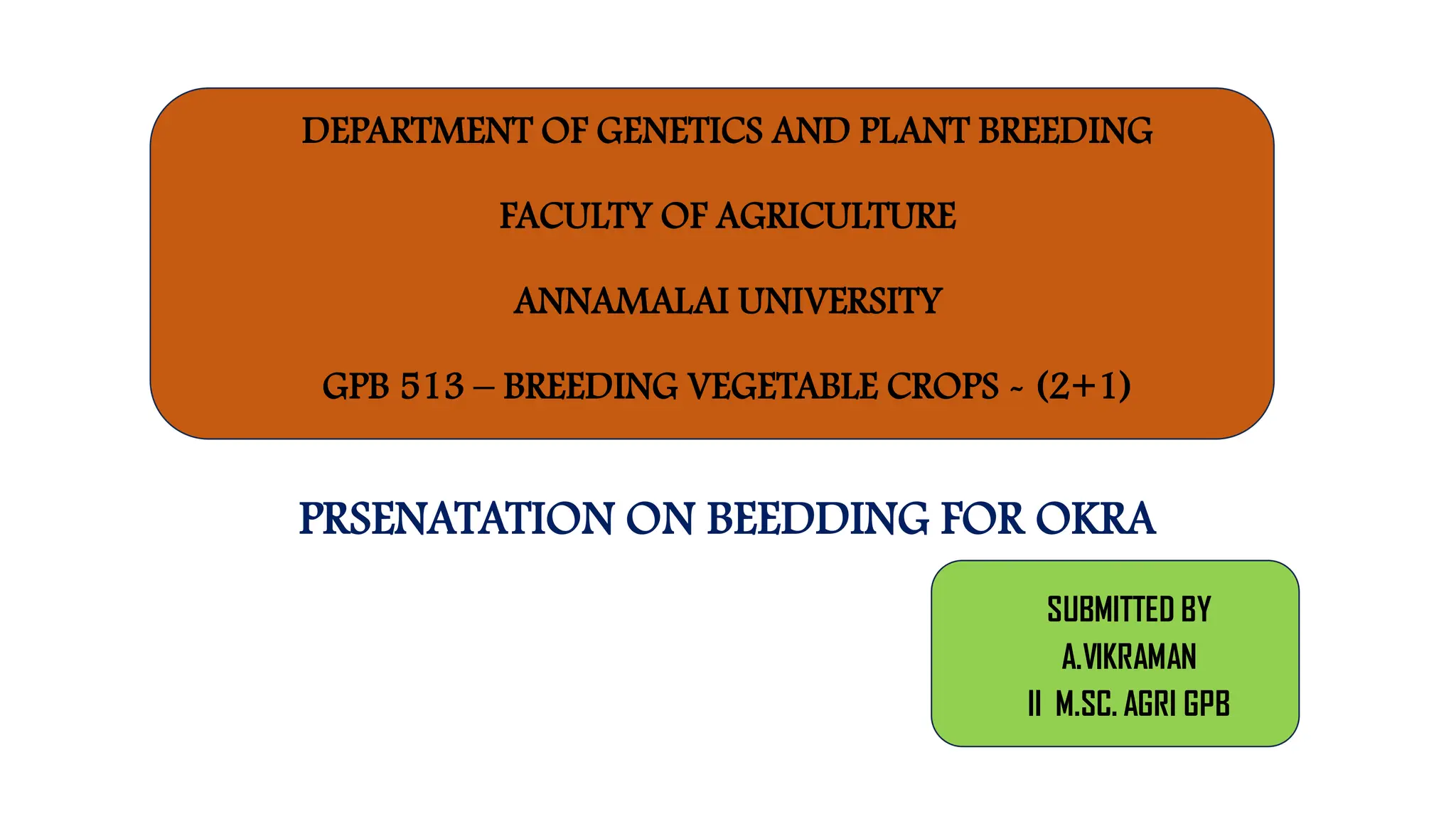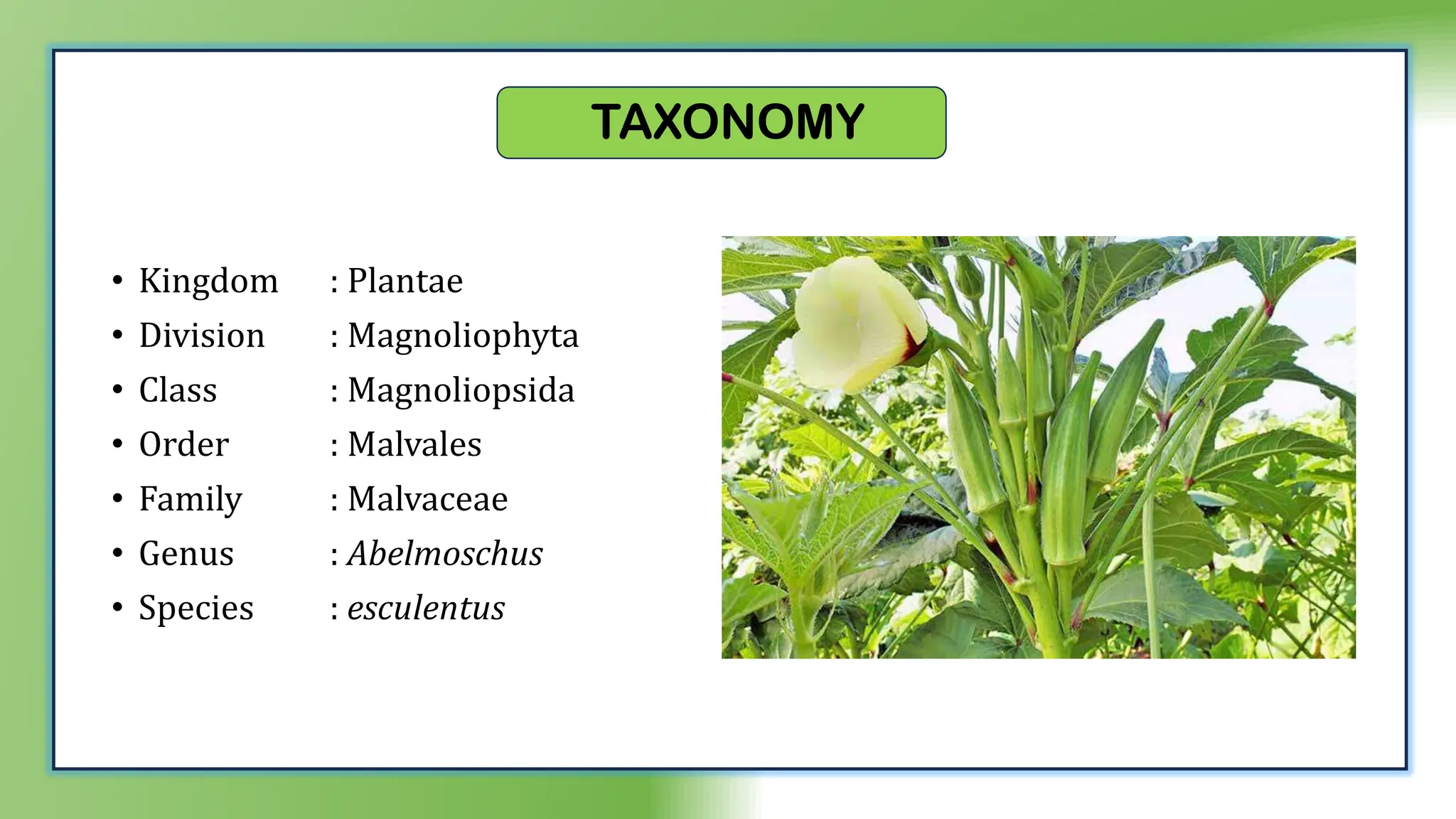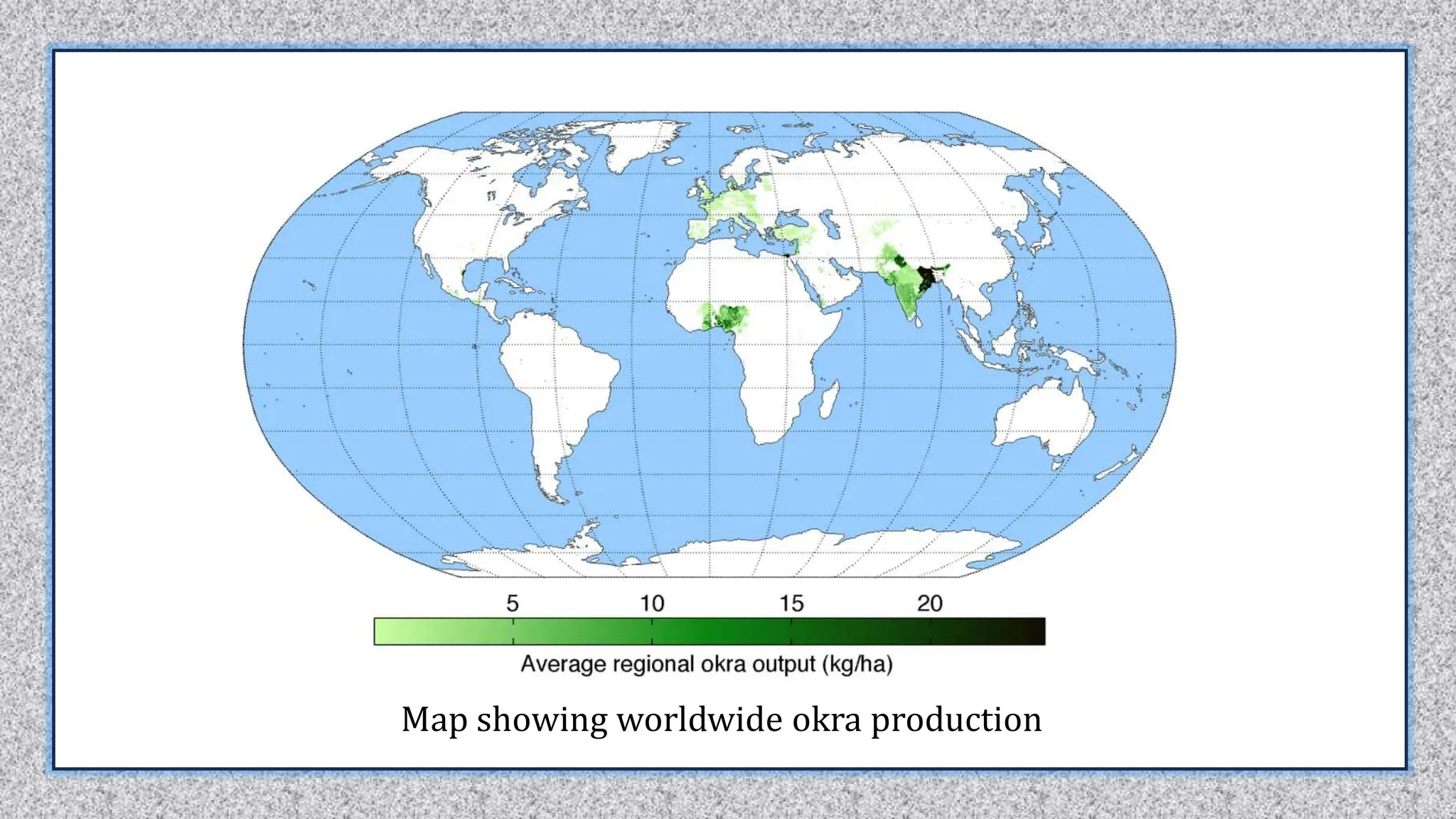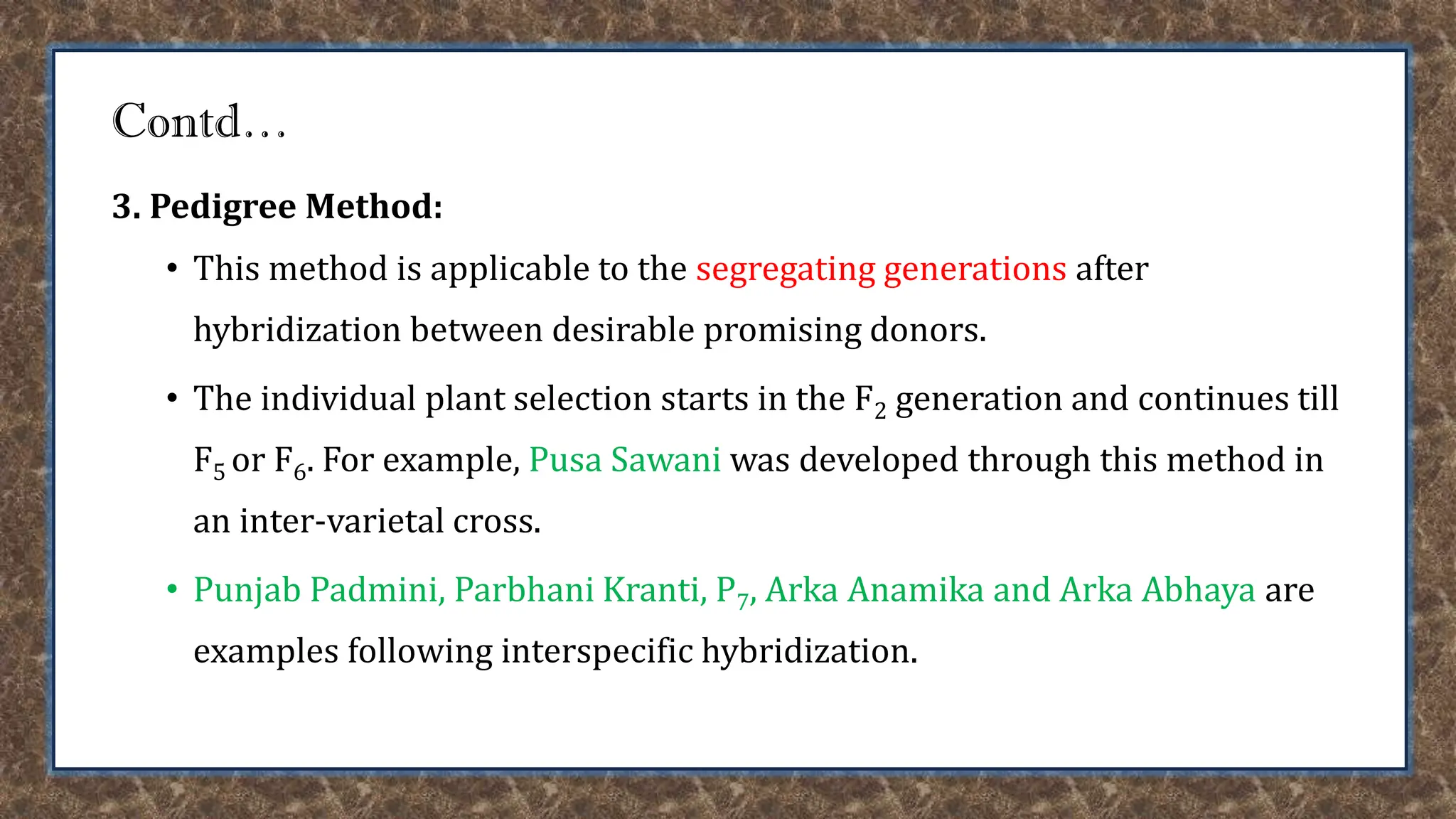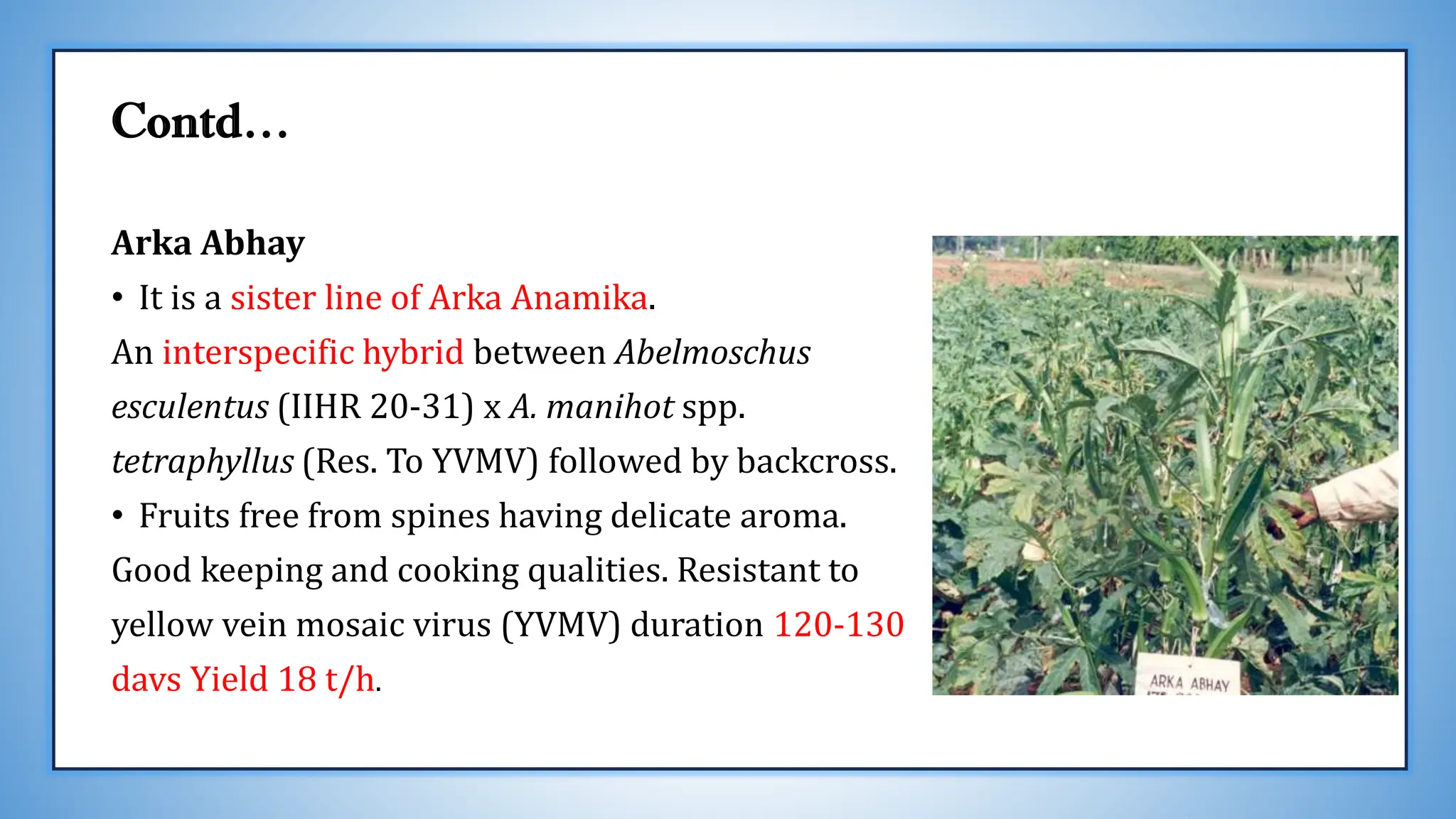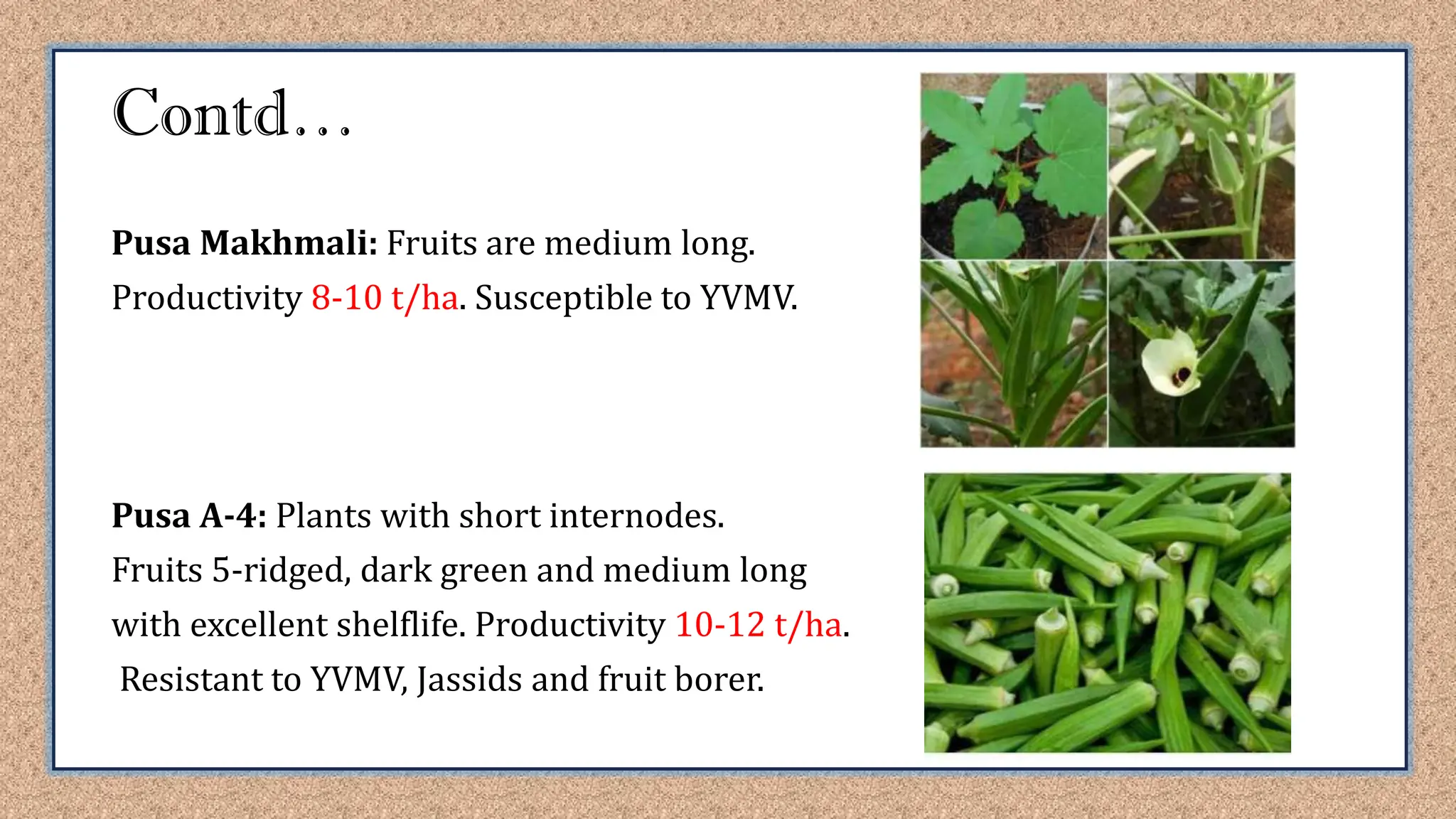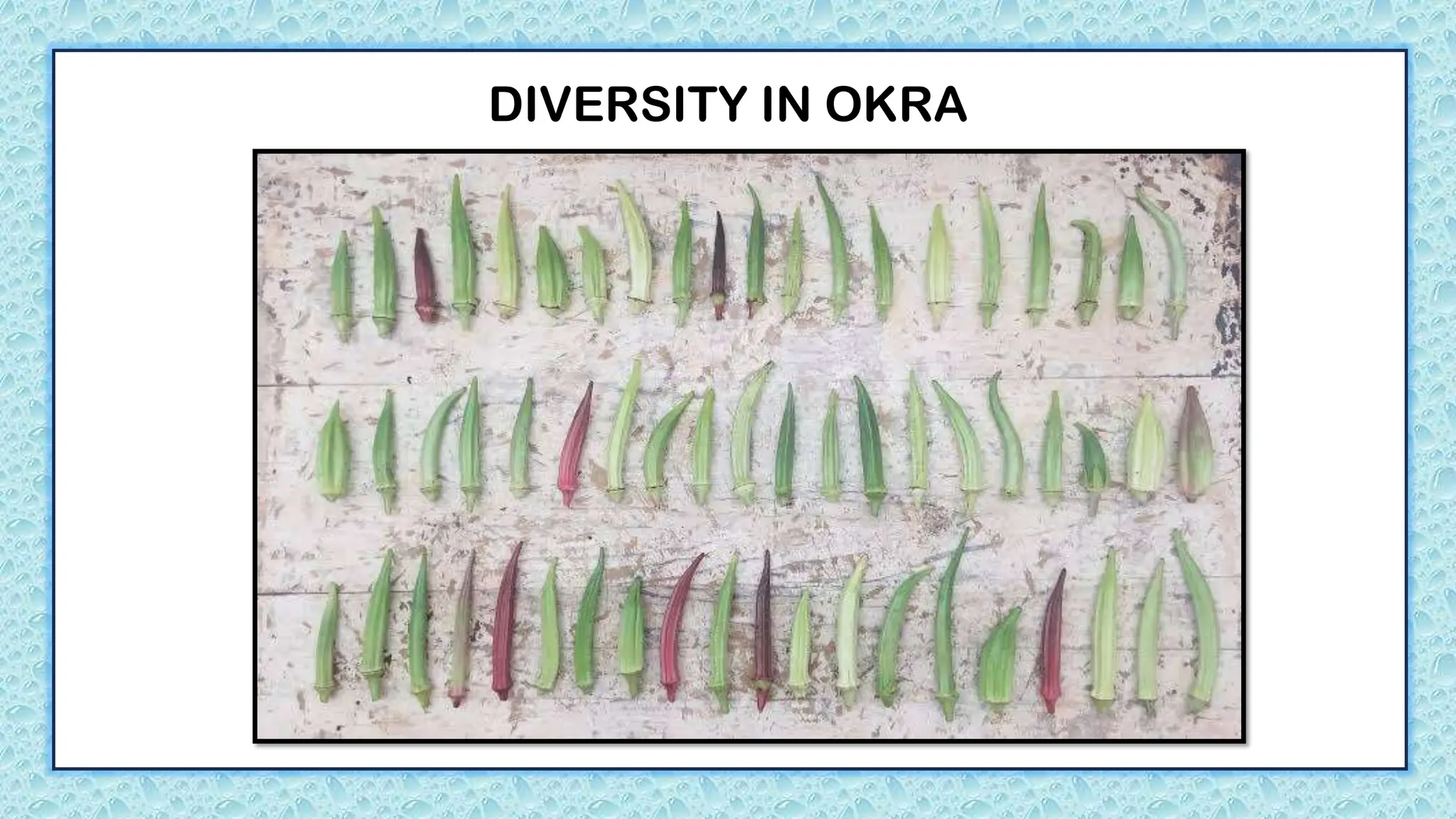The document presents a detailed overview of okra (Abelmoschus esculentus), highlighting its nutritional benefits, importance in various cuisines, origin, and cultivation. It discusses genetic resources, breeding objectives, methods, and improved varieties developed for resistance to diseases and high yield. Key challenges include disease resistance and abiotic stress tolerance, with India being the largest producer of okra globally.
